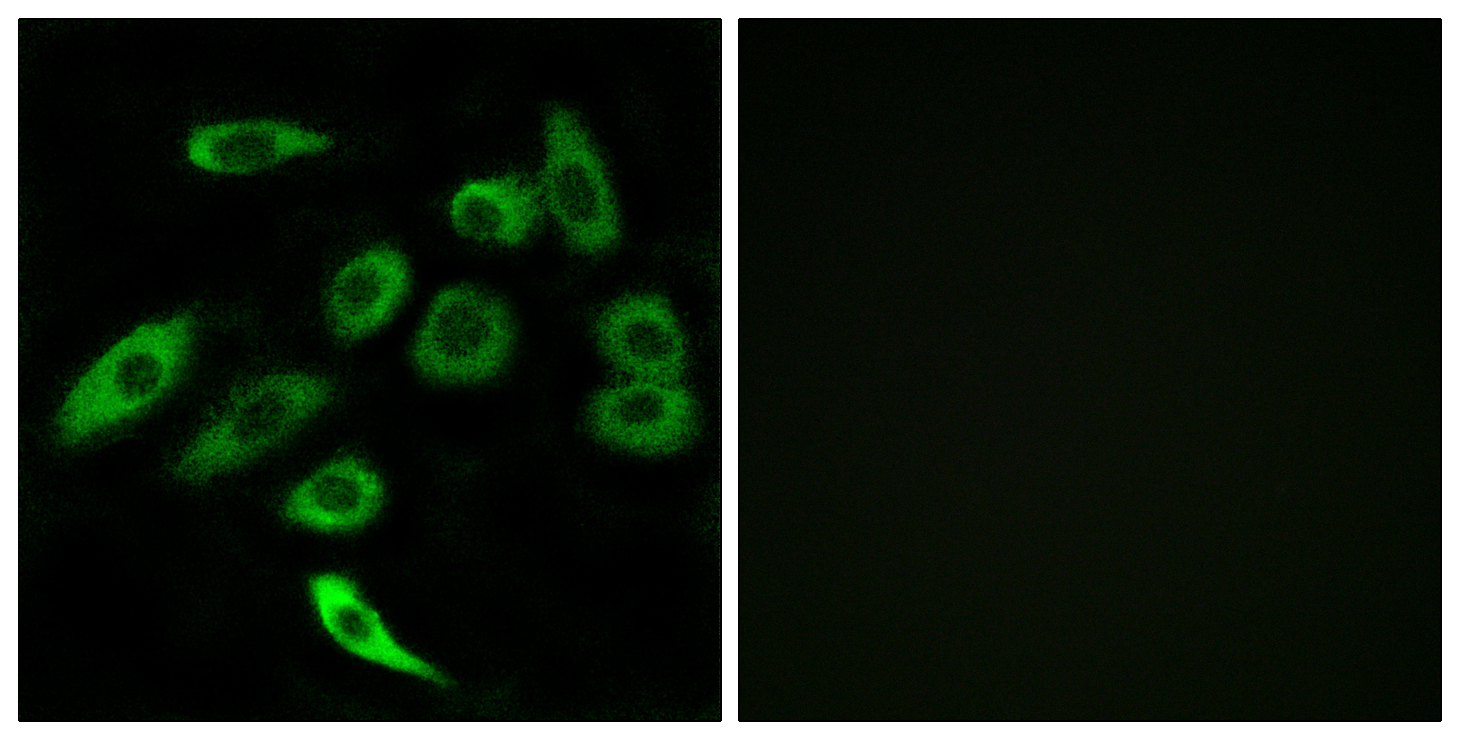T2R3 Polyclonal Antibody
- Catalog No.:YT4508
- Applications:IF;ELISA
- Reactivity:Human;Rat;Mouse;
- Target:
- T2R3
- Fields:
- >>Taste transduction
- Gene Name:
- TAS2R3
- Protein Name:
- Taste receptor type 2 member 3
- Human Gene Id:
- 50831
- Human Swiss Prot No:
- Q9NYW6
- Mouse Swiss Prot No:
- Q7TQA7
- Immunogen:
- The antiserum was produced against synthesized peptide derived from human TAS2R3. AA range:140-189
- Specificity:
- T2R3 Polyclonal Antibody detects endogenous levels of T2R3 protein.
- Formulation:
- Liquid in PBS containing 50% glycerol, 0.5% BSA and 0.02% sodium azide.
- Source:
- Polyclonal, Rabbit,IgG
- Dilution:
- IF 1:200 - 1:1000. ELISA: 1:20000. Not yet tested in other applications.
- Purification:
- The antibody was affinity-purified from rabbit antiserum by affinity-chromatography using epitope-specific immunogen.
- Concentration:
- 1 mg/ml
- Storage Stability:
- -15°C to -25°C/1 year(Do not lower than -25°C)
- Other Name:
- TAS2R3;Taste receptor type 2 member 3;T2R3
- Molecular Weight(Da):
- 36kD
- Background:
- This gene encodes a member of a family of candidate taste receptors that are members of the G protein-coupled receptor superfamily and that are specifically expressed by taste receptor cells of the tongue and palate epithelia. These apparently intronless taste receptor genes encode a 7-transmembrane receptor protein, functioning as a bitter taste receptor. This gene is clustered with another 3 candidate taste receptor genes in chromosome 7 and is genetically linked to loci that influence bitter perception. [provided by RefSeq, Jul 2008],
- Function:
- function:Gustducin-coupled receptor implicated in the perception of bitter compounds in the oral cavity and the gastrointestinal tract. Signals through PLCB2 and the calcium-regulated cation channel TRPM5.,miscellaneous:Several bitter taste receptors are expressed in a single taste receptor cell.,similarity:Belongs to the G-protein coupled receptor T2R family.,tissue specificity:Expressed in subsets of taste receptor cells of the tongue and palate epithelium and exclusively in gustducin-positive cells. Expressed in the antrum and fundus (part of the stomach), duodenum and in gastric endocrine cells.,
- Subcellular Location:
- Membrane; Multi-pass membrane protein.
- Expression:
- Expressed in subsets of taste receptor cells of the tongue and palate epithelium and exclusively in gustducin-positive cells. Expressed in the antrum and fundus (part of the stomach), duodenum and in gastric endocrine cells.
- June 19-2018
- WESTERN IMMUNOBLOTTING PROTOCOL
- June 19-2018
- IMMUNOHISTOCHEMISTRY-PARAFFIN PROTOCOL
- June 19-2018
- IMMUNOFLUORESCENCE PROTOCOL
- September 08-2020
- FLOW-CYTOMEYRT-PROTOCOL
- May 20-2022
- Cell-Based ELISA│解您多样本WB检测之困扰
- July 13-2018
- CELL-BASED-ELISA-PROTOCOL-FOR-ACETYL-PROTEIN
- July 13-2018
- CELL-BASED-ELISA-PROTOCOL-FOR-PHOSPHO-PROTEIN
- July 13-2018
- Antibody-FAQs
- Products Images

- Immunofluorescence analysis of A549 cells, using TAS2R3 Antibody. The picture on the right is blocked with the synthesized peptide.



